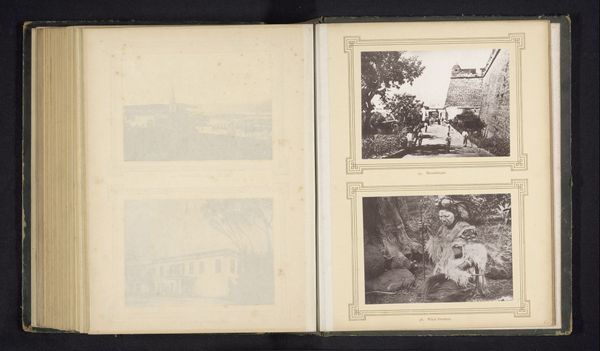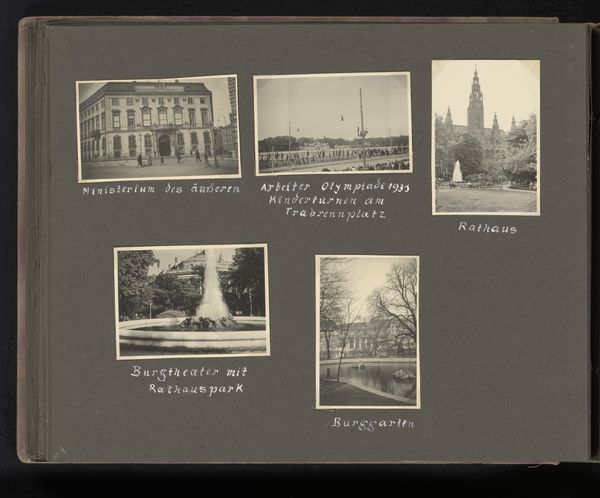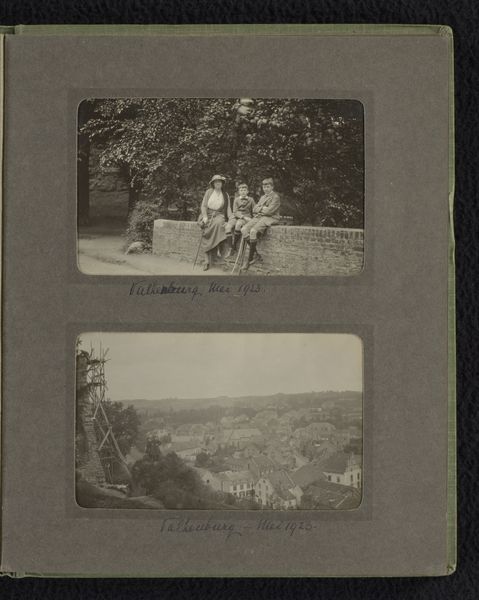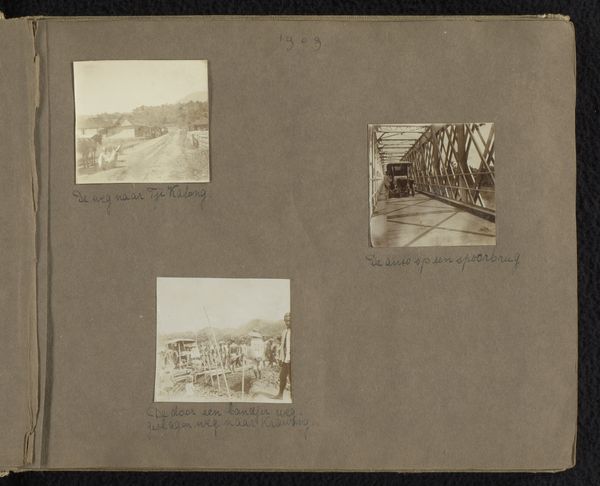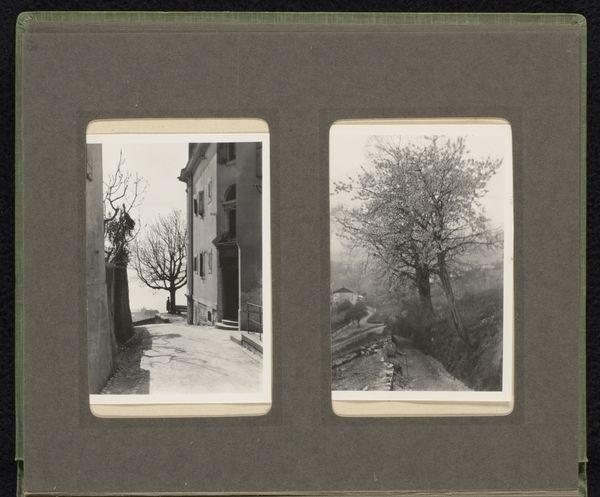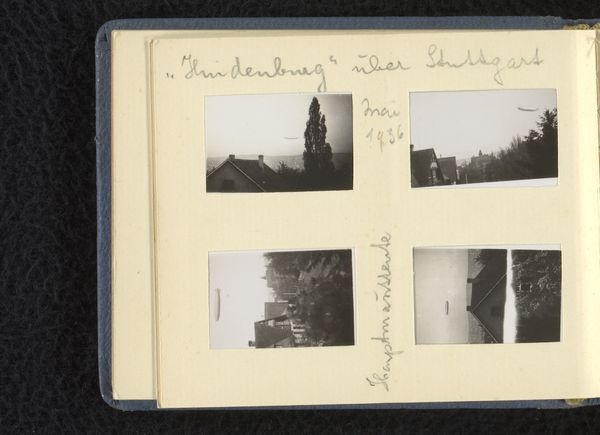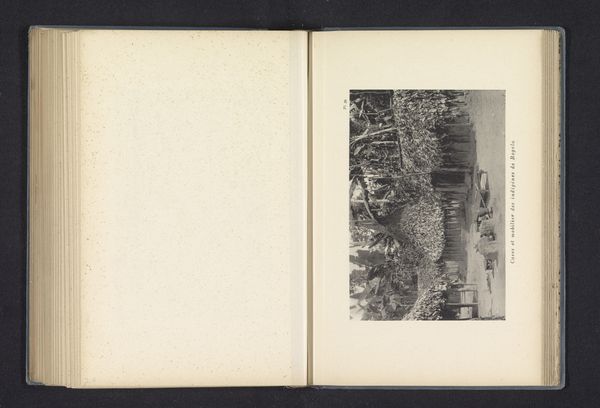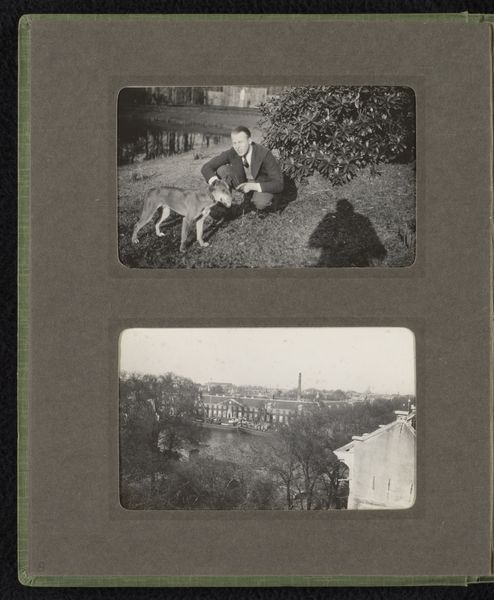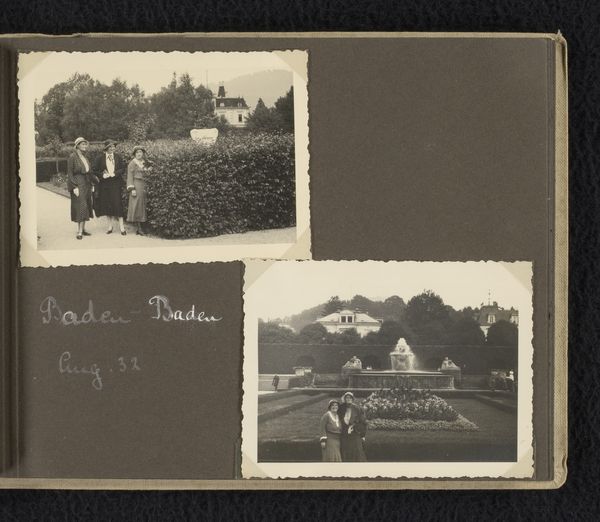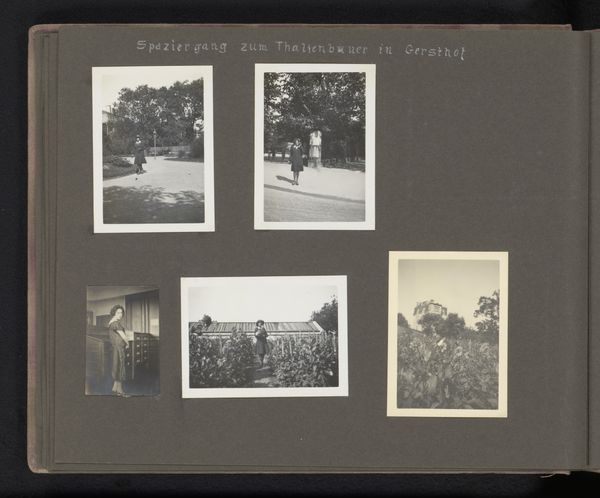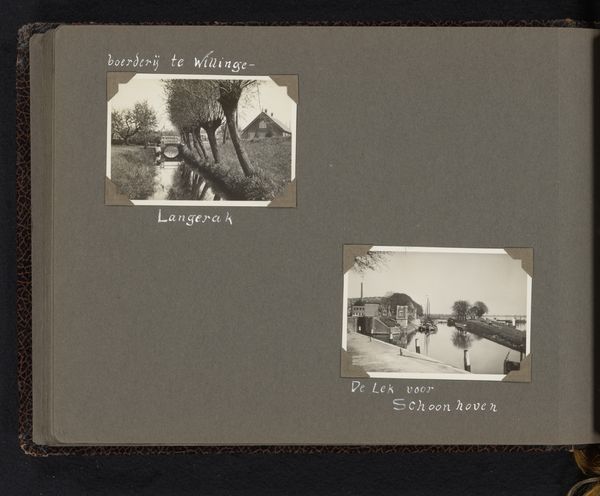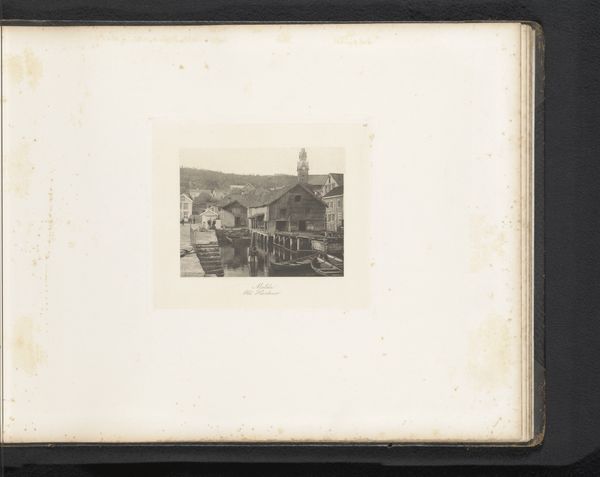
Echtpaar Berti Hoppe en Herman Besselaar in het Prater te Wenen en een stadsgezicht van Mödling 1930 - 1931
0:00
0:00
photography
#
portrait
#
street-photography
#
photography
#
cityscape
Dimensions: height 190 mm, width 265 mm
Copyright: Rijks Museum: Open Domain
Curator: Here we have a charming photographic piece dating from 1930 to 1931, entitled "Echtpaar Berti Hoppe en Herman Besselaar in het Prater te Wenen en een stadsgezicht van Mödling," or translated, "Married Couple Berti Hoppe and Herman Besselaar in the Prater in Vienna and a cityscape of Mödling." Editor: My immediate impression is one of understated elegance and melancholy. The monochrome tones give it a sense of timelessness, but also, a quiet sadness. It is not, however, hopeless sadness, but rather the melancholy often caused by witnessing human fragility and fleeting nature, something particularly acute, of course, for those interwar years. Curator: Indeed. Note how Hoppe and Besselaar are posed—at a table, in partial sunlight. It captures a cultural memory tied to interwar Europe; a time of elegance contrasted by increasing austerity, especially with the looming financial pressures after the crash in '29. What symbolism might be at work here? Editor: Considering its historical moment, the choice of setting, I believe, takes on extra significance. They are photographed in Prater, a large public park, juxtaposed next to Mödling. It brings up questions about what constitutes private versus public identity at that historical conjuncture. The very construction of gender at this time was, in part, also a public debate. Who were Hoppe and Besselaar in the domestic versus the public sphere? Curator: This photograph certainly evokes a narrative ripe with potential questions about public life at the time, while the second smaller photograph included beside this image anchors it within familiar imagery of Central European domesticity. A snapshot within a family album. Editor: Exactly. Moreover, one must wonder what it meant to present this bourgeois vision against a Europe on the brink, rife with political tensions—particularly the anxieties about gender, identity, and belonging as new political actors gained prominence. Did they want to document a private identity, hoping that these portraits and views will outlast turbulent times? Curator: A very insightful point. Photography, like many other forms of representation, carries layers of cultural and political meanings, both intended and unintended, of course. Looking closely helps unlock them. Editor: Agreed. Visual artifacts from the interwar years can teach us much about individuals grappling with shifting identities against great upheavals. Curator: It certainly is a layered image worth exploring further. Thank you. Editor: My pleasure. Thank you for shedding light on Hoppe and Besselaar.
Comments
No comments
Be the first to comment and join the conversation on the ultimate creative platform.
